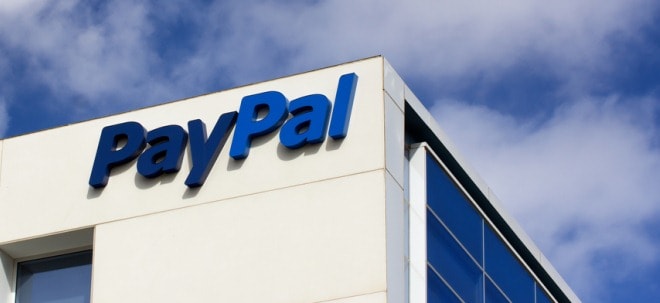Intel bogged down by multiple missteps
Part One Hubble, bubble, AMD and trouble
By Charlie Demerjian: Monday 03 April 2006, 08:27
INTEL IS IN DEEP trouble, and it doesn't seem to be capable of grasping what needs to be done to fix the problem.
That problem is AMD, and the vast chunks of market share it is gouging out of some of Intel's formerly most profitable areas. Intel keeps striking back, or attempting to, but in a shockingly ineffectual and reactionary manner, but nothing seems to work because it is aiming at the wrong target. Management doesn't, or more likely refuses to understand what needs to be done.
Intel is now in the midst of a round of hush-hush price cuts. The most recent was a spur of the moment 10% kickback to distributors that made their numbers this quarter, US only.
The problem was it was late, many didn't get it in time to act, and it targeted the wrong components. Since it was a US initiative only, it had the bonus effect of irritating European, Asian and other customers.
Intel is also aiming at the low end of the market, and word has it that it is targeting AMD with a low end price war, taking Celerons from a $50 part to a $40 part, and soon to be a $35 part. This was always effective against AMD in the past, so why not now? However, AMD isn't in that space anymore but it is eating the Intel high end, not the low. The net effect of this plan is Intel is cutting margins on its volume lines seemingly without any effect on its target.
Now, why would Intel cut prices and force distributors to move product out the door as fast as they can? The answer is market share. This is a classic example of a company eating its own future. It is moving chips out the door through every means possible and basically flooding the market so it doesn't have to announce huge marketshare drops at the next quarterly conference call.
Inventory Buildup
Intel has to avoid an inventory build up that many see as inevitable, so it is shoving Celerons out the door as fast as it can. It can't make the same cuts to Pentium 4s or Pentium Ms because that would destroy its margins in a way that would require explaining to Wall Street.
The problem is that AMD was sold out for Q4, and has been on allocation for Q1 since long before Q1. That position has eased in Q2, but there are still supply problems. AMD has a shortage of millions of microprocessors and that is not easing.
So, with Intel management running around wondering what to do, rearranging deck chairs on the Itanic, we believe it is pulling out the play books of old and missing its targets. It has to keep margins up, it has to keep marketshare numbers up, and has to do it in a way that makes it look good.
Look for AMD to take another huge chunk of Intel's market during the next quarterly conference call, and things to get worse after that. Q2 will not improve the situation, Intel can start a price war, but that would only disproportionately hurt them. AMD is now the leader in server class parts, and is raising prices because people will pay a premium for Opterons. Any pricing games will most likely be shrugged off because if you need low power/high performance parts, your choice is AMD. Any price war might ease the shortage of AMD parts, but only a devastating war would burn all the way through it.
Woodcrest and AMD's K8L
What about the saviour chip, Woodcrest? Using Intel's own numbers, it expects the next gen architecture to ramp to 20% of sales by the end of the year. These numbers traditionally are for the last day of the quarter, so with New Year's Eve being the best case scenario, 80% of Intel's market is still vulnerable to AMD. It is telling customers like Dell that by mid-2007 it will be able to deliver about 60% new cores, so the bleeding won't end quickly.
With AMD resurgent, and K8L coming to close any gap with Intel on power, the lessened bleeding has a good chance of being a very short lived phenomenon. AMD will likely hold on to any gains they make for a long time.
Over the last two or three years, the Intel roadmap has been ripped up time and time again, and each time a reactionary stopgap is put into place. Craig Barrett's "we screwed up, but we will fix it" speech on the Pentium 4 not making 4GHz seems to have fallen on deaf ears. Each new plan has been torn up time and time again, but now it's learned something because Intel has not talked publicly about the problems.
There are multiple problems that need addressing, and few if any seem to be getting the needed attention. Intel needs to stop reacting and come up with a comprehensive technical plan, throw out distractions, and replace management with a new team that listens to the engineers.
The reason that AMD is walking all over Intel is not because of the chips it has, it is because of the platform. Not platform in the "shiny happy people" Intel marketing sense, but in a coherent, cohesive technical manner. AMD built a strong infrastructure and put a strong chip on it. It has a complete system approach that works together, and gets the right job done for the right reason.
AMD does lag in some areas but more than makes up for that in others. People don't buy a single benchmark result, they buy a computer. AMD in effect has the computer, Intel doesn't. When AMD slaps Intel silly with a result, performance watt being the marker right now, Intel comes out with a number or three to point out that its upcoming parts will bring them back into the game.
Intel needs a Hypertransport
The problem is that it aims at a specific target in the system, making the CPU better, or the FSB better and doesn't look at the whole. When AMD was not a credible player, checkbox marketing would have worked, but AMD has achieved Intel's worst nightmare, 'street cred'. Buyers now look past the checkboxes and evaluate things on a comprehensive and fair basis.
Until Intel comes out with a coherent whole, basically a Hypertransport ecosystem for Intel parts, it will continue to have problems. It has cancelled at least half a dozen projects including CSI, its version of Hypertransport, in the last few years. From the ill-conceived Whitefield disaster to the mediocrity inducing common platform, such attempts have been clouded by mismanagement and poor decision making.
The great white hope is due in the fourth quarter of 2008, and it is called Nehalem. Until then, Intel is in Whack-A-Mole mode, and it will keep bleeding. Barring another failure to execute, it will put them where AMD is now in terms of platforms, unless AMD pulls something else out of the hat. Woodcrest may be a great core, but if you plug it into a garbage platform, it is a shining spot on a pile of garbage. µ
http://theinquirer.net/Default.aspx?article=30710
Zwar kein Analyst, aber sollte doch zu denken geben.... |


 Thread abonnieren
Thread abonnieren


